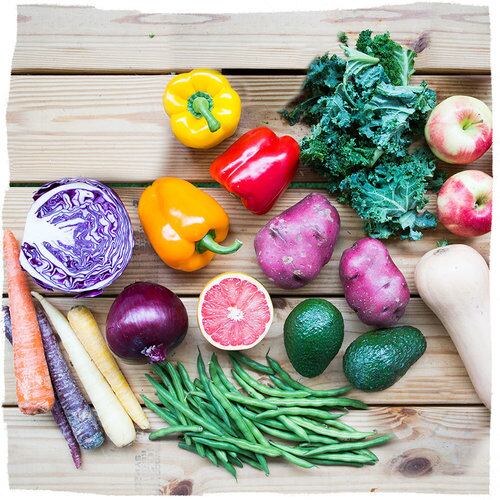“We deliver farm fresh fruits and vegetables that otherwise wouldn’t find a home for various reasons,” Lutz told FoodNavigator-USA.
“We predominantly work with farms – 60% to 80 of the time – in the regions that we serve.”
The company also sources less-than-perfect-looking produce from wholesalers and packinghouses within a 200 to 300 mile radius of its markets.
Milestones and expansion plans
Each year, 125 billion pounds of food are sent to the landfill and 20% of Americans live in food insecurity, according to Hungry Harvest.
Since the company was founded in 2014, it has made a sizeable dent in fighting food waste having saved 8 million lbs of food destined for landfill and provided more than 750,000 lbs of produce to local nonprofits, food banks and ‘Produce in a SNAP’ reduced-cost markets.
In addition to metro Detroit and Ann Arbor, Hungry Harvest delivers in Maryland, Washington D.C., Philadelphia, Southern New Jersey, Northern Delaware, Northern Virginia, South Florida, and The Triangle area in North Carolina.
Every Hungry Harvest delivery rescues at least 10 pounds of food from going to waste and supports the work of local hunger-solving organizations.
In its new market of Detroit, for example, the company will be partnering to support Forgotten Harvest, a nonprofit organization that delivers food - free of charge - to emergency food providers across Metro Detroit.
“People all over Metro Detroit face food insecurity every day,” Kirk Mayes, CEO of Forgotten Harvest, said.
“Our trucks will continue to go out every day delivering healthy, rescued food to agencies that serve this vulnerable population. We welcome new partner businesses that contribute or redirect their surplus food to help our mission.”
In addition to receiving a $100,000 from Shark Tank celebrity investor Robert Herjavek in 2016, Hungry Harvest launched a $500,000 debt financing earlier this year and as of March 2018 has reported raising $250,000 so far.
The company plans to spread its socially conscious business model to two more cities by the end of the year, Lutz added.
“Our plan is to expand to about 30 more cities across the United States over the next four years.”
Fighting hunger and food insecurity hook
Re-occuring food delivery services have struggled with retention rates but Hungry Harvest’s added value of helping improve healthy food access to underserved communities and fight mounting food waste has helped it grow its subscriber ship to the “five figures” range in the regions where its operational, according to Lutz.
“All of our customers really sign up for the mission because they’re really invested in fighting food waste and hunger by simply eating healthier,” Lutz told FoodNavigator-USA.
Depending on the box selection prices range from $15 to $28 for a "mini" and up to $35 to $50 for a "super" box.
“Anybody that has $15 to spend is our customer,” Lutz said.

Consumers can choose to get a box on a weekly or biweekly basis or halt deliveries for a few weeks to go on a vacation.
“A lot of consumers love the fact that we deliver right to their door, and usually our products are a lot cheaper than a grocery store or farmers market, and even fresher than what you find in grocery store or farmers market.”
Consumer education and perception of food
The perception of what “quality produce” should look like is also helping Hungry Harvest’s cause of saving cosmetically imperfect fruits and vegetables.
“I really think our perceptions of food have changed over the past hundred years -- a hundred a years ago people bought the peppers that were odd shapes and odd sizes because that was just what normal food looked like,” Lutz said.
“Today, you walk into the grocery store and see you all the apples lined up, shiny, and same size, same color, and same shape. What we’re trying to do is educate consumers that this is what real food is supposed to look like.”
